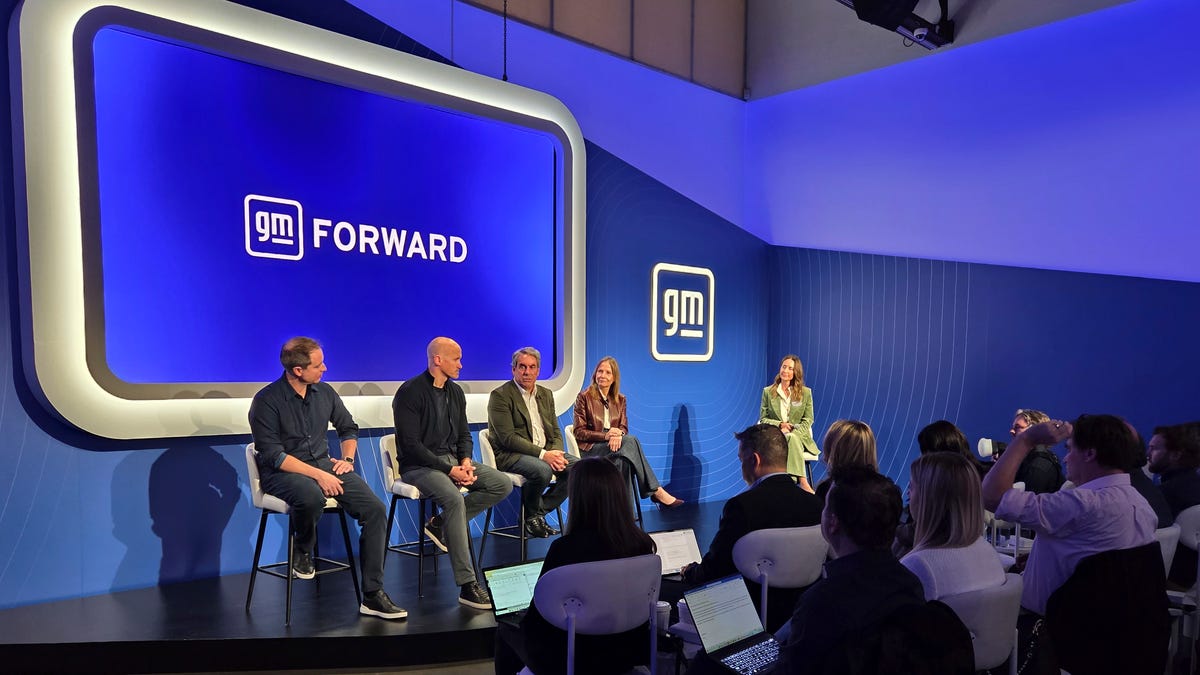New York — General Motors Co. unveiled plans Wednesday to offer eyes-off autonomous driving in the battery-powered Cadillac Escalade IQ SUV beginning in 2028 as the Detroit automaker seeks to recast itself for the 21st century.
The announcement at a swanky, invite-only event in midtown Manhattan is part of a broader pitch that GM is a tech company, not just a 117-year-old auto manufacturer with deep roots in industrial Detroit. At stake is GM’s place in the global auto industry amid competition from China, where carmakers are making more and more advanced vehicles at blazing speeds.
“We’re drawing from our rich heritage, our engineering, our design (and) our manufacturing expertise and we’re doing something entirely new,” CEO Mary Barra said as journalists, influencers and executives sipped lattes topped with the company logo displayed in dusted cocoa. “We’re working to accelerate the future.”
Whether and how that would work remains to be seen. GM faces a tough sell in convincing investors and prospective tech employees that it has moved beyond being a legacy automaker, analysts said.
“I don’t think GM can totally shed the image,” Morningstar analyst David Whiston said. “But what they can do is try to show people they are working on this.”
GM at the event also announced plans for what Apple Inc. alum David Richardson, now GM’s senior vice president of software and services engineering, described as “conversational” Artificial Intelligence powered by Google Gemini. The interactive software launches next year. GM did not specify on which models the feature will be available.
“GM has been a technology company for a very long time,” said Stephanie Brinley, principal automotive analyst for the Americas at S&P Mobility. “This development for GM isn’t like they woke up yesterday and said, ‘Wouldn’t this be cool?'”
GM’s tech showcase took place a day after the company reported that it outperformed third-quarter expectations from Wall Street, which has long favored Tesla Inc. and other EV startups for their potential as innovators. Wall Street responded favorably to GM’s third-quarter earnings report Tuesday, which beat analysts’ expectations, with the automaker’s stock surging 15%. Wednesday, as the overall market slumped, GM shares rose 1%.
The automaker posted per-share profits of $2.80 and revenue of nearly $49 billion, while analysts had expected revenue of about $44 billion and earnings of $2.26 per share.
After teasing autonomous driving and in-house software development to investors Tuesday, Barra and other executives on Wednesday showed off a mock lithium manganese-rich battery, an early design of the 2028 Cadillac Escalade IQ with the autonomous driving features, and equipment for turning the automaker’s EVs into backup home generators.
To illustrate the capabilities of its forthcoming Level 3 self-driving tech, GM deployed a seven-screen display that simulated human vision versus the autonomous vehicle system on California’s Highway 1.
The event is not GM’s first attempt at a tech makeover. The company, for years, has been poaching high-paid Silicon Valley executives to engineer software-defined vehicles, AI programs and self-driving cars — a best-and-brightest talent strategy Barra has publicly acknowledged and endorsed, despite internal grumbling.
GM continues to face internal tensions between its longtime, engineering-minded workers and the tech employees taking their jobs for higher pay. The stakes are high as the Detroit automaker seeks to compete with Chinese electric vehicle innovators, as well as U.S. EV leader Tesla Inc. and other traditional rivals.
The Detroit automaker also faces headwinds in its effort to scale up EV production and sales as the Trump administration and congressional Republicans have scrapped tax credits and moved to roll back emissions regulations — the carrot-and-stick approach of the Biden administration meant to encourage EV adoption.
While Barra this week told investors that electrification remains GM’s “North Star,” the automaker has canceled or scaled back numerous EV investments and ramped up investments to produce V-8 engines and high-profit, gas-powered trucks and SUVs. The company’s BrightDrop electric vans, canceled this week, were the latest casualty.
The company last year scrapped funding for its Cruise LLC robotaxi and absorbed its engineers to work on improving autonomous features for passenger vehicles.
GM executives determined, after spending $10 billion on Cruise since 2017, that it was too expensive, especially in light of its so-far-unprofitable work on EVs. A pedestrian crash in 2023 also opened up Cruise to scrutiny from public officials and consumers.
Earlier this month, GM closed its hydrogen fuel cell program after decades of research failed to develop it as a feasible vehicle power source.
And last week, the company took a $1.6 billion writedown on EV investments that are no longer needed with unfriendly federal policy under Trump and tepid interest in battery-powered vehicles among U.S. drivers. Plants that had been slated for EV assembly are being retooled to make more profitable gas-powered pickup trucks and SUVs.
“They’ve made a lot of interesting announcements,” said Sam Abuelsamid, vice president of market research at Telemetry. “But that’s all they are right now is announcements.”
Some automakers have already launched Level 3 technologies in limited conditions. BMW AG offers a Personal Pilot L3 feature in Germany, for example, and Honda Motor Co. Ltd.’s Traffic Jam Pilot was the first certified Level 3 technology in Japan.
In the United States, the Mercedes-Benz Group AG’s eyes-off Drive Pilot is certified for most major freeways in California and parts of Nevada. Tesla offers a Level 2 hands-free, eyes-on-the-road Full Self-Driving feature on its passenger cars, but also operates fully automated robotaxis.
“GM is every bit as advanced as everyone else in developing (autonomous vehicles), and more than others,” Brinley said.
Before touting future products, executives on Wednesday explained why they left companies such as Apple to join GM.
“I’ve joined GM in part to take on the next frontier,” said GM’s product Vice President Sterling Anderson, who cofounded autonomous trucking company Aurora.
The influx of new leadership from Silicon Valley gives GM a greater chance at delivering on big promises, Abuelsamid said. But he said execution on technology such as Level 3 self-driving is key.
“Again, it’s three years away,” Abuelsamid said. “And who knows what we’ll see introduced between now and 2028. It’s certainly good stuff, but it’s not here yet.”
sballentine@detroitnews.com












